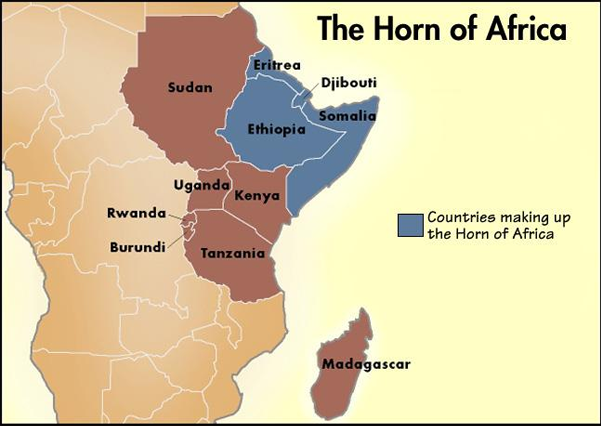Rapid Fire
Rapid Fire Current Affairs
- 02 May 2023
- 5 min read
Flash Floods in the Horn of Africa
Reports from organizations like the United Nations Office for the Coordination of Humanitarian Affairs (UN-OCHA) and the Kenya Red Cross show dire cases of flash floods in Kenya, Tanzania, and parts of Horn of Africa. The Horn of Africa is a peninsula in Northeast Africa that includes countries like Somalia, Ethiopia, Eritrea, and Djibouti. The floods come at a time when the countries in the Horn of Africa are struggling with a sharp surge in climate-linked disease outbreaks, including diarrhoea, cholera, and measles.
Flash floods are sudden and intense floods that occur when heavy rainfall exceeds the capacity of the soil and drainage systems to absorb it. Flash floods can cause widespread damage to infrastructure, crops, livestock, and human lives. These events have a high peak and typically occur within six hours of the rainfall. The intensity and distribution of rainfall, land use, topography, vegetation, soil type, and water content all affect the speed and location of flash flooding. To mitigate the impact of flash floods, it is essential to avoid living in valleys and instead live in areas on slopes with firm ground.
Read more: Landslide and Flash Floods
Underground Ammunition Storage Facility
The Centre of Fire, Explosive and Environment Safety (CFEES) an Indian defence laboratory of the Defence Research and Development Organisation has designed an Underground Ammunition Storage Facility, which reduces the blast effect on surrounding utilities during an explosion. The Design Validation Trial of this facility was successfully conducted recently, where 5,000 kgs of TNT (trinitrotoluene) was detonated in one of the chambers of the underground facility.
The unique design of the Underground Ammunition Storage Facility reduces the required safety distances by up to 50%, and the safety distance has been established up to 120 Metric Ton ammunition storage per chamber. The design ensures higher safety of ammunition stored from any kind of aerial attack or sabotage. This facility can be extensively used by the Armed Forces for storage of all types of ammunition, reducing the land footprint requirements, and providing enhanced safety of ammunition.
Successful Trial of Air Droppable Container
The Indian Navy and the Defence Research and Development Organisation (DRDO) have successfully tested an air droppable container with a payload capacity of 150 kg, the container was dropped from an IL 38SD aircraft . The trial aimed to improve the naval operational logistics capabilities by providing a quick response to meet the critical engineering stores' requirements for ships deployed more than 2,000 kilometers from the coast. It also aims to reduce the need for ships to come closer to the coast to collect spares and stores.
The container's development was a collaborative effort of three DRDO laboratories, including the Naval Science and Technological Laboratory (NSTL) in Visakhapatnam, the Aerial Delivery Research & Development Establishment (ADRDE) in Agra, and the Aeronautical Development Establishment (ADE) in Bengaluru. The successful test of the air droppable container will enhance the Indian Navy's operational capabilities, making it easier and faster to provide critical supplies to ships deployed far from the coast.
India’s First Undersea Tunnels
India’s first undersea twin tunnels are set to open in Mumbai, after more than two years of work on the Mumbai Coastal Road Project by the Brihanmumbai Municipal Corporation. The tunnels are part of the 10.58-kilometer-long Coastal Road project that connects Marine Drive to the Bandra-Worli Sea Link. The 2.07-kilometer-long tunnels are located 17-20 meters below sea level, with a nearly 1-kilometer stretch running under the sea. The project aims to reduce travel times during peak hours from 45 minutes to just 10 minutes. Six cross passages will be provided in the tunnels, four for pedestrians and two for motorists, with each tunnel having three lanes. The tunnels were created with the help of the largest tunnel-boring machine (TBM).






